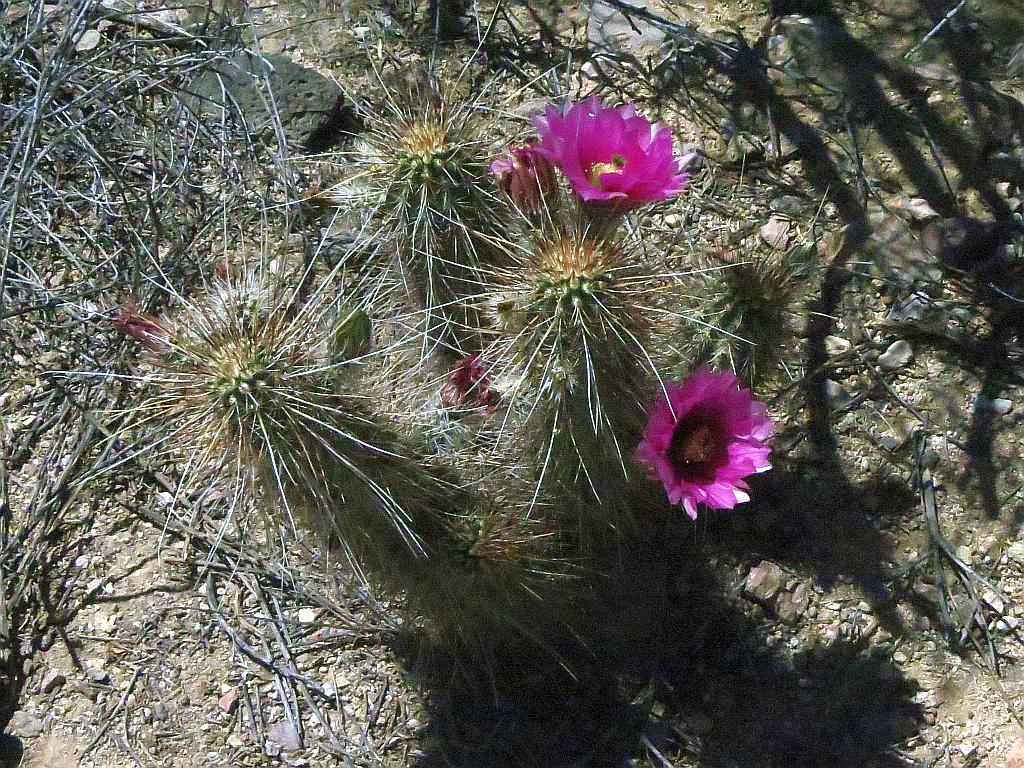When I learned that it is legal to move protected native vegetation on our own property without permission from the Arizona Department of Agriculture, I selected this nice little hedgehog cactus up near the north property line as a candidate to move to the lower lot. It has only four lobes and will probably be light enough for me to dig up and carry to its new location. Succulents can be quite heavy since they consist of hydrated flesh and can contain several quarts of water in each lobe.
As soon as this guy stops flowering in June, I will carefully dig around it to be able to lift it out of the ground and into the wheelbarrow for transportation to the lower lot. I took this photo this morning. Click on the image to enlarge.


I can’t tell if it is Echinocereus engelmannii, or E. fasciculatus, but either way it’s a beauty. It should reroot easily, as well.
I found a broken branch of E. engelmannii that was dessicated to half its normal mass. I planted it in desert soil, and in a few weeks, I could tell it had rooted again, as it was increasing in size. The next two years, it had new growth, and this year, it flowered!
When I get ready to move this guy, I will document the process photographically and publish the results here. Damsel has seen this cactus and would like to have it join the other two which are on the front side of the house where the beautiful flowers can be seen from the road and our courtyard.
By the way, we discovered several more “Arizona Queen of the Night” cacti up near where this specimen is located. One of those may get transplanted as well (or cuttings from them). I hope they do as well as your E. engelmannii did.
Cool! More “Queens”!
Looking forward to the photo essay about moving the cactus.
Hey, I just noticed the link to the tagged Hedgehog in your post “Hidden Hedgehog”. It looks like it’s E. fendleri v. rectispinus. Funny that the person issuing the tag stamped it “pincushion”.
Hmmm . . .
That image came from a pamphlet distributed by a well-known cactus society based in Tucson. One would think they and the AZ Dep’t of Agriculture would know the species.